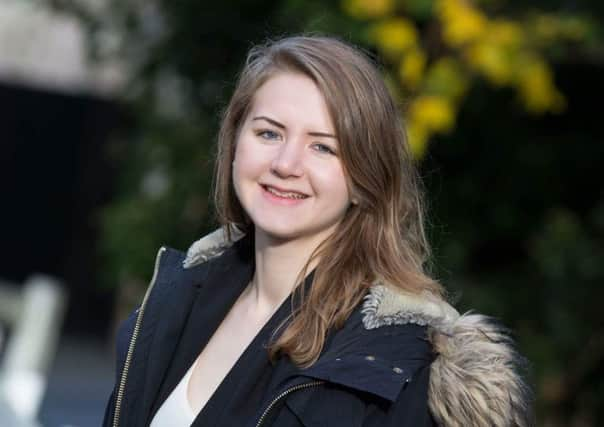‘How winter makes me depressed’ says Cara who suffers from Seasonal Affected Disorder


Putting the clocks back is a real sign of winter, but for some people it is much more than that.
Leeds PR consultant Cara Feingold, 26, suffers from Seasonal Affective Disroder (SAD) which is mostly caused by the longer dark nights.
Advertisement
Hide AdAdvertisement
Hide Ad“I became really depressed during winter, but I didn’t realise or even think about it until it was the summer,” explains Cara.
“I wouldn’t want to go out in the evenings – and it was only ever in the colder months. I recently started a job in an office, and we had really bad lighting, so I bought one of the SAD lamps. It made such a difference, I didn’t feel as tired and I was a lot more alert and focused.
“The worst thing for me is when the clocks go back, I find evenings so hard.
“When it goes dark I feel a sudden need to fall asleep, which is a lot worse when it gets dark at 4pm. I’d stay in the house too much.”
Advertisement
Hide AdAdvertisement
Hide AdSAD has affected at least 40 per cent of us in our lifetime according to new research, and a majority of us have experienced at least one symptom.
According to the NHS, symptoms of SAD include a persistent low mood, weight gain, and feeling lethargic.
A new survey from AO.com found that 60 per cent of the people in UK have experienced at least one of the symptoms associated with the seasonal form of depression.
The survey shows the huge impact SAD has on everyday life, with 30 per cent of those who have suffered taking a day off work due to at least one of the associated symptoms. That’s around 13 million of the UK workforce.
Advertisement
Hide AdAdvertisement
Hide AdSleep expert for Silent Night Dr Nerina Ramlakhan said: “Seasonal Affective Disorder is characterised by persistent low mood, irritability, and feeling sleepy during the day.
“At its worst, the disorder is treated with antidepressants and UV light therapy but in milder cases, small lifestyle changes like getting a good night’s sleep, eating right and spending more time outside can be incredibly effective.”
What can people do to make their SAD less severe according to Dr Ramlakhan?
Have a goal: It is really important to ensure you have a sense of purpose all year round, and are prioritising and working towards this in everything you do.
Advertisement
Hide AdAdvertisement
Hide AdExercise: Exercise reduces stress hormone levels and will give you a clearer and more positive outlook on life; it also enables you to sleep more deeply.
Get outside: Exposure to sunlight increases the brain’s release of the happy hormone serotonin. In the winter your serotonin levels can dip, so try to get outside as much as possible.
Eat right: The winter leaves many of us craving starchy carbohydrates and while these are a vital part of any diet, it’s important to strike a balance
Have a nap: Feeling lethargic during the day is a common symptom of Seasonal Affective Disorder. Learning how to power nap is a great way of combating this.
Advertisement
Hide AdAdvertisement
Hide AdBe tech smart: Information overload and constant connection can negatively impact your mood. It might be tempting to cuddle up with your iPad this winter, but make sure you allow your brain to switch off in the evenings. Avoid social media accounts and emails for 90 minutes before bedtime.
The research found that 49 per cent of people who said they suffer from SAD admitted to taking a day off work as a result of their symptoms, and Cara said it may have contributed to some sick days.
“I’ve never taken time off work purely because of it, but I feel like it might contribute to more illness. In terms of my mental health, I’m more likely to get burnout because I’m not as energised,” she says.
“It’s always worse for me at the end of December because it’s been dark for longer, it’s had more time to make an impact – and I noticed it more on New Year’s Eve. Everyone would be out celebrating but I couldn’t think of anything worse, I just want to go to bed.”
Advertisement
Hide AdAdvertisement
Hide AdWhile 12 per cent of people surveyed labelled Christmas as the worst thing about winter, Cara is still a huge fan, despite it being in the middle of her worst months.
“I don’t dislike winter, I love the stuff that happens in winter. I think Christmas is easier because a lot of celebration happens during the day,” says Cara.
“I look forward to spending more time with family, going out for coffee, cooking and baking – all of those things that come along with winter.”
SAD: The Facts
Seasonal affective disorder (SAD) is a type of depression that comes and goes in a seasonal pattern.
Advertisement
Hide AdAdvertisement
Hide AdSAD is sometimes known as “winter depression” because the symptoms are usually more apparent and more severe during the winter.
A few people with SAD may have symptoms during the summer and feel better during the winter.
For some people, these symptoms can be severe and have a significant impact on their day-to-day activities.